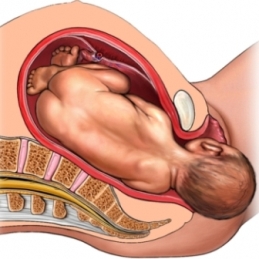This problem occurs at the time of delivery.
Shoulder dystocia occurs when your baby is delivered through the vagina, but the shoulders get stuck inside your body.
This is risky for both you and your baby. Dystocia is a condition of slow or difficult labor or delivery [Emotional Dystocia signs].
Reasons for Shoulder dystocia
- Caused by an unusually large baby.
- If you are overweight or suffering from diabetes, you are at greater risk of delivering a baby with larger weights.

- If your pelvic opening is too short for your baby to come out easily, this condition results.
- If your pregnancy has multiple babies. [Multiple Pregnancy]
- If you deliver the baby after the due date.
- If you have had shoulder dystocia or delivered a large baby in your past delivery.
Prevention of shoulder dystocia in the delivery room
In most cases, the baby is delivered safely. Here are a few things that your practitioner will do:
- Press your thighs against your belly;
- Roll you onto all fours;
- Apply pressure to your belly;
- Try to turn your baby’s shoulders when the baby is still inside you;
- Gently cut the opening of the vagina;
- Assist you to get into a hands and knees position as this can change the diameter of your pelvis;
- Suggest you flex your legs towards the shoulders when you are lying on your back so that the pelvic outlet expands;
- Push your baby back inside your vagina and perform C-section;
- Perform a C-section once the labor has begun.
Complications due to shoulder dystocia for you and your baby:
Usually, there will be no permanent damage to you and your baby, but there will be some complications for both of you:
Complications for you:
- Bleeding heavily after the delivery;
- Tearing of the vagina, uterus, rectum or cervix;
- Bruising of your bladder;
- Rupturing of the uterus.
Complications for your baby:
- Risk of injury for the nerves of the arms, hands and shoulders which can cause paralysis or shaking. In most cases, this problem will persist for 6-12 months;
- Collarbone or broken arm;
- Deficiency of oxygen and in most rare and severe cases, it can result in brain damage and also death of the baby;
- Injury to the fetal bronchial plexus.
In most cases, the complications associated with you and your baby can be well treated by your practitioner.






